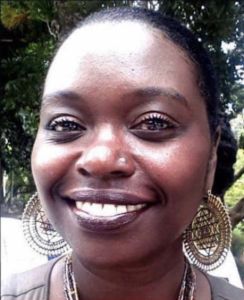Archivist Skyla Hearn and SSCAC Public Engagement lead zakkiyyah najeebah dumas o’neal kick off our Women’s Month and 3831/VOICES series to engage in an informal conversation that traverses Skyla Hearn’s archiving practice, their intersecting connections to Black women arts workers and SSCAC, and the influences that help sustain them in their work.
Grab a cup of tea – or wine, and join us! All attendees are welcome to join in on the conversation, so come ready to talk!
ZOOM REGISTRATION: https://us06web.zoom.us/meeting/register/tZEsdO2hpjMuHt1HVb7ylERiBrz0xeDi5EoQ

Skyla Hearn is a proud Chicagoan (South Side) by way of Mississippi. As an archivist, liberatory memory and cultural worker Skyla is most concerned with supporting a community’s attempt to understand, document and share its own history, particularly those aspects that have not been well recorded. Skyla’s passion and dedication towards the creation, management, preservation and accessibility of archives, with particular focus on BIPOC LGBTQIA+ collections, ephemeral materials, knowledge development, and social justice has provided her with unique opportunities to work with diverse individuals, communities and repositories at various capacities nationally and internationally.
Skyla is also co-founder of The Blackivists, a collective of trained Black memory workers who provide expertise on archiving and preservation practices to communities in the Chicago land area; and the inaugural Manager of Archives for Cook County Government under the Offices of the President of the Board of Commissioners.
As a legacy keeper, she recently (March 2021) co-edited the zine publication Our Girl Tuesday: An Unfurling for Dr. Margaret T.G. Burroughs alongside Sarah Ross and Tempestt Hazel with an introduction by Mariame Kaba, published by Sojourners for Justice Press.
https://www.theblackivists.com/
3831/VOICES is a new program series of conversations and lectures featuring Black artists, scholars, curators, historians, and arts workers that invite our community into their creative practices, research, and conceptual processes, and more! 3831 takes after SSCAC’s exact numerical address in the historic Bronzeville neighborhood. Although we recognize ourselves as an iconic historical site for Black artistic and cultural advancement, we continue to evolve as a contemporary hub for new thought practices, creative practices, and innovative frameworks being developed by a diverse array of amazing folks here in our city, and beyond.
Image Courtesy (above): South Side Community Art Center



